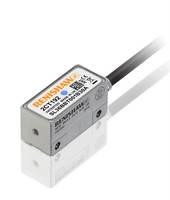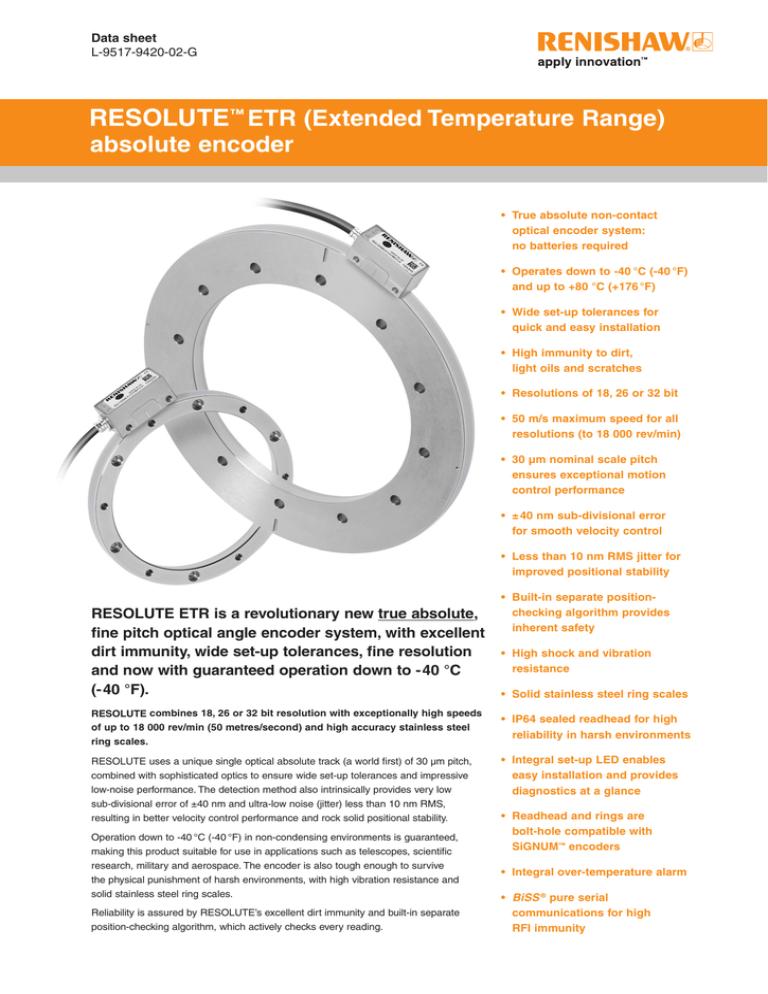
October 2020 - Pacific Antenna Systems (PAS) designs, fabricates and manufactures state-of-the-art antenna systems that use radio frequencies (RF) ranging from 1–110 GHz. Applications include high-resolution radar, high-rate data communications for line-of-sight and satellite (SATCOM) communications, and high-power microwave systems for drone (UAS) countermeasures.
The basic principle of an antenna is the accurate positioning of an RF beam on a target.
PAS utilizes several different electro-mechanical designs for its antennas, depending on the application. Rotary position encoders are installed on each motion axis (gimbal) to provide the required precision and accuracy.
In airborne systems, challenging environmental conditions such as sub-zero temperatures, RF noise and high mechanical vibration complicate the task of finding a suitable encoder.
Previous PAS antenna systems suffered from encoder performance issues such as lower accuracy, poor RF interference immunity (RFI) and vibration rejection.
Renishaw encoder products have enabled PAS to improve the positioning accuracy and resolution of its servo control loops by over two orders of magnitude.
ChallengesRadar and RF communications systems for airborne applications need to be light-weight, compact and powerful. These systems must also be modular and easy to assemble.
Anthony J. Macri, Vice President of PAS, explains how this impacts design:
“We use the acronym: Size, Weight and Power (SWAP). For everything we do on the airborne radar and the comms side, SWAP is an extremely important parameter.
For us, the challenge is to put a beam on a target. We use very tight beams in our RF systems, especially in the millimeter (mm) wavelength regime. Beam spread can be as low as several hundredths of a degree at W-band (95 GHz). When we mount the antenna on a platform, there is an error budget for the navigation data. If the accuracy and resolution of the gimbal encoders is poor, then the RSS pointing error of a system will increase and we will be unable to find the target.”
PAS airborne communication systems are vital for the high-data rate communications of aircraft such as NASA’s WB57 research plane. The encoder on each gimbal must function at altitudes of over 40,000 ft and at temperatures below ‑40 F. High rotational speeds and accelerations are also essential in order to allow fast beam pointing and scanning operations.
Encoders are critical components in communications and radar applications and need to be highly reliable, as a failure could potentially endanger lives.
SolutionPAS uses different gimbal designs for is monostatic radar and comms systems, but they all use the RESOLUTE absolute optical encoder with BiSS-C serial protocol and 26-bit or 32-bit resolution options.

“We exclusively use RESOLUTE encoders in our radar products, the line-of-sight and SATCOM antennas and high-power microwave products. We have chosen these encoders for their high accuracy and high resolution, which we can use in our control loops. We’ve flown them on UH60 Blackhawk helicopters, as part of the collision avoidance radar, and the vibration environment on a Blackhawk is extremely challenging. We noticed that the RESOLUTE encoders were highly immune to vibration. If the encoder were to oscillate and lose count, then the control loop would be compromised. RESOLUTE encoders provide us with the level of accuracy and robustness that we need,” says Mr Macri.
PAS monostatic radar systems feature a stack-up of components that include the RF array feed at the bottom, and a series of lenses mounted on two-axis gimbals and powered by a direct-drive motor. Each motor is mechanically coupled to a RESOLUTE Extended Temperature Range (ETR) encoder with a 75 mm D-section RESA ring scale for feedback control of the lens rotation.
“The encoders are offset and coupled directly to the drive, as the motors are very small. A motor has a rotor and a stator component, so what we do is couple the ring to the rotor component. As the motor starts to spin, it accurately rotates the ring with respect to the encoder readhead, which is placed outside the entire mechanism. The beauty of the radar application is that the RF energy propagates in free space through the bore of each motor,” adds Mr Macri.
The RF comms systems are of an analogous design but feature more traditional slip rings, rotary joints and coaxial media. In this case, the open bore of Renishaw’s RESA ring provides the space and functionality needed at the top end of each rotation axis.
ResultsRenishaw’s RESOLUTE ETR encoder with BiSS-C protocol has enabled PAS to design and build cutting-edge antenna systems for a wide range of applications.
Mr. Macri highlights the benefits of choosing the RESOLUTE encoder for antenna systems:
“There are many things that we really like about RESOLUTE: ease of use, high accuracy and resolution, and reliability and suitability for challenging environments. During assembly, our technicians manually align the encoder readhead using a feeler gauge and it doesn’t take much to align them. Also, the RESOLUTE encoder’s advanced diagnostic and setup tools help to quickly resolve any problems. PAS is using the BiSS-C serial protocol for the encoder signal output, because it’s open architecture, easy to use and fast. Importantly, it features a high number of safety cyclic redundancy check (CRC) bits. So, you know if there is a problem. When you look at a life cycle situation, being able to get the product built quickly, effectively and have it fielded reliably is critical. RESOLUTE encoders enable us to do this.”
In PAS radar systems, lenses spin at over 7000 degrees/sec and accelerate at greater than 40,000 degrees/sec2. Due to their unique single-track design, RESOLUTE encoders enable very high resolutions at high velocities. This performance affords PAS radar systems market-leading measurement accuracy of the target position.
“We use 32-bit encoders and we truncate down to about 18-bits. What’s great for us is that the accuracy number and the LSBs (Least Significant Bit) of the resolution are extremely close. The accuracy and resolution, when the encoder is set-up as 18-bit BiSS, mesh perfectly. We need repeatability within a thousandth of a degree. We must test all components on these assemblies due to the significant nature of the applications. RESOLUTE more than exceeds our requirements,” concludes Mr Macri.
About PASCalifornia-based Pacific Antenna Systems (PAS) utilizes state-of-the-art electromagnetic modelling and simulation tools to design elegant and affordable antenna systems for communications, SATCOM, radar and high-power microwave applications. PAS also specializes in solving complex antenna system problems and provides rapid design and prototyping capability for its customers. Services include consulting, design, manufacturing and safety analysis.
About RenishawRenishaw is one of the world's leading engineering and scientific technology companies, with expertise in precision measurement and healthcare. The company supplies products and services used in applications as diverse as jet engine and wind turbine manufacture, through to dentistry and brain surgery. It is also, a world leader in the field of additive manufacturing (also referred to as 3D printing), where it designs and makes industrial machines that “print” parts from metal powder.
The Renishaw Group currently has more than 80 offices in 36 countries, with over 4,500 employees. AM Solutions Centers are located in the USA, UK, Germany, Canada, India and China. For more information on Renishaw, visit www.renishaw.com.
For further information:Public RelationsCaroline CurleyAccount ExecutiveIvor Andrew1901 Gary AvenueWheaton, IL 60187Tel: +1 630-588-8320caroline@ivorandrew.comhttp://www.ivorandrew.com
General InformationJeff SeligaMarketing ManagerRenishaw Inc.1001 Wesemann Dr.West Dundee, IL 60118Tel: +1 847-286-9953 (switchboard)Jeffrey.Selia@renishaw.comwww.renishaw.com
Download Spec Sheet
ShareElectronic Components & Devices
Machinery & Machining Tools
Cleaning Products & Equipment
Health, Medical, & Dental Supplies and Equipment
Services